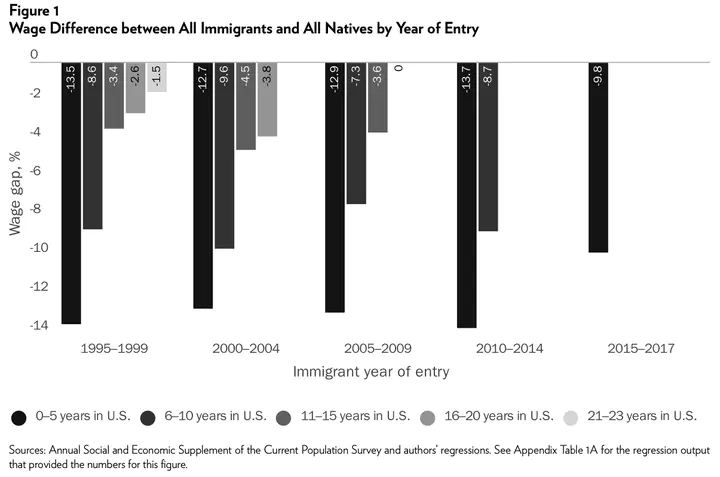
Abstract
The degree and speed at which immigrant wages converge with the wages of native‐born Americans are important indicators of economic assimilation. Newly arrived immigrants have wages lower than otherwise identical natives, but those wage differences diminish greatly or disappear entirely after about two decades of working in the United States. Immigrants entering today generally start with a narrower wage gap, relative to native‐born Americans, than do immigrants who entered in the 1990s. From 1995 to 2017, illegal immigrants initially faced a hefty wage penalty of about 11.3 percent relative to legal immigrants. That wage gap can be mostly explained by their lack of legal work status. Although immigrant wages generally converge with those of native‐born Americans, legalizing illegal immigrants will hasten overall wage convergence.